Abstract
Our experience with 294 regional lymph node dissections in 250 patients are reviewed. The relationship between the Clark's level of invasion and the thickness of the primary is related to regional lymph node metastases. Patients with Clark's Level III melanoma had a 29% incidence of regional lymph node metastases, Clark's Level IV had a 42% incidence of regional lymph node metastases and Clark's Level V a 58% incidence of regional lymph node metastases. Primary melanomas greater than 1.5 mm in thickness had a 38% incidence of positive regional lymph nodes. We therefore recommend a regional lymphadenectomy in patients with Clark's Levels III, IV and V and all melanomas that are greater than 1.5 mm in thickness. A new technique is described which is helpful in localizing the direction of ambiguous lymphatic drainage in patients with truncal melanoma. The use of radioactive colloidal gold scanning has been useful in predicting lymphatic shed in these ambiguous truncal melanomas. Certain technical aspects of inguinal lymph node dissection are emphasized in an attempt to reduce the morbidity of these dissections. It is emphasized that iliac-obturator lymph node dissections are not performed unless the inguinal lymph nodes are found to be involved by frozen section examination at the time of surgery.
Full text
PDF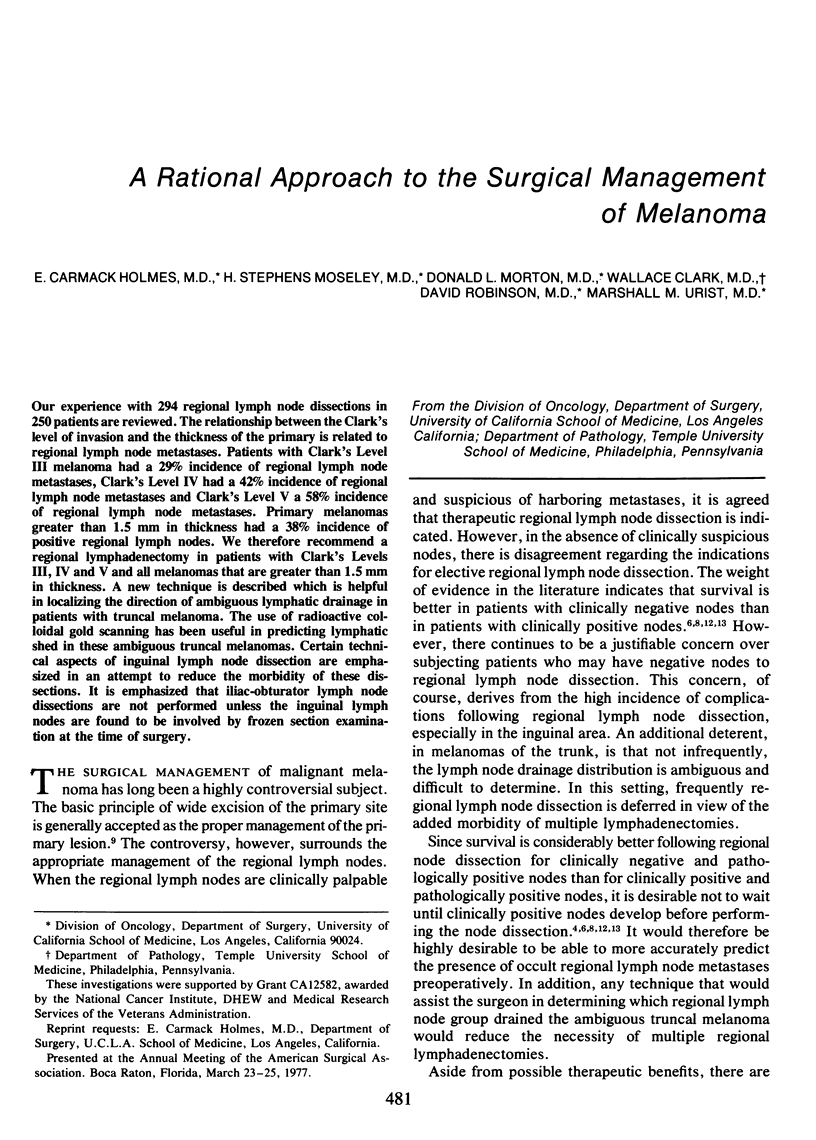
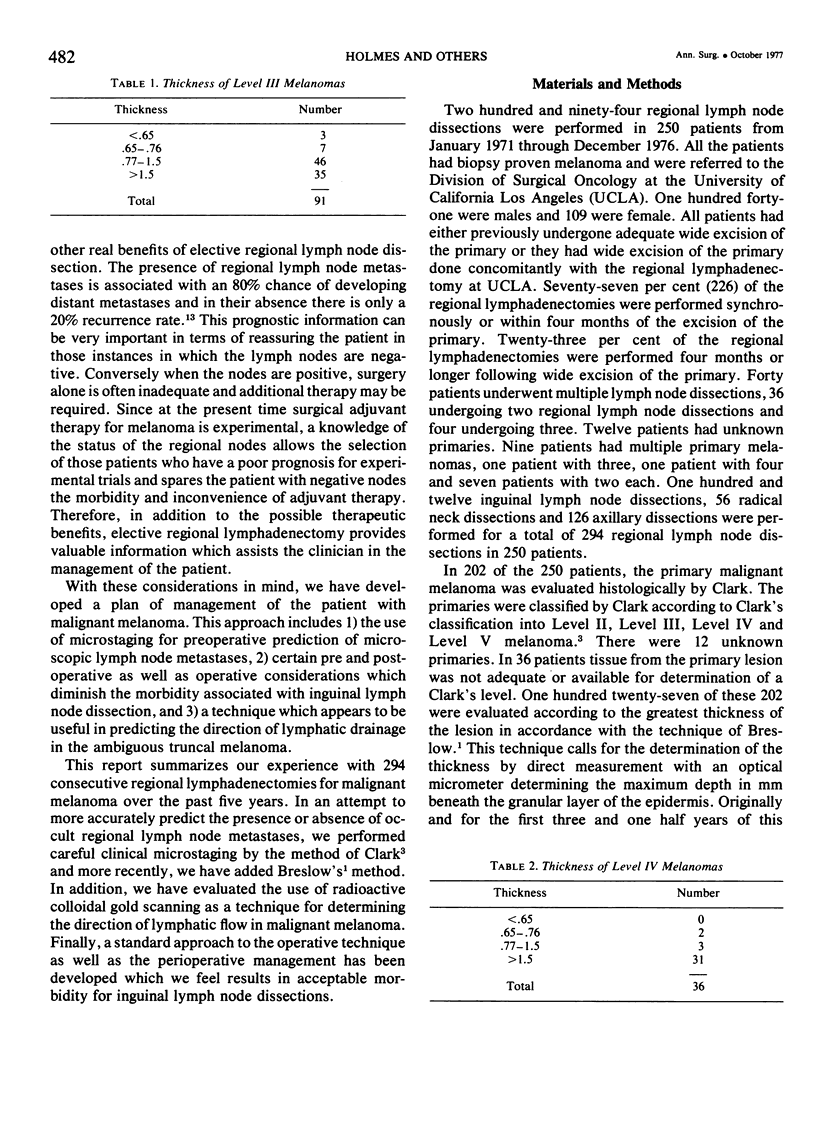
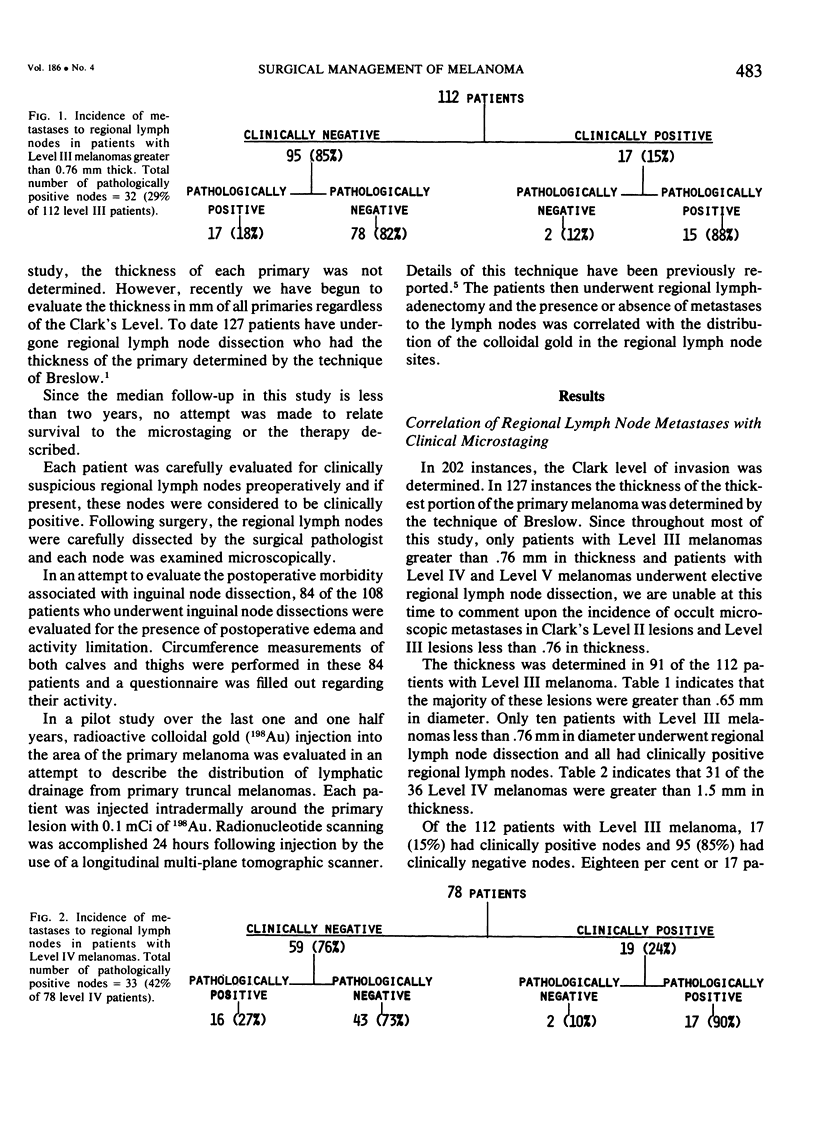
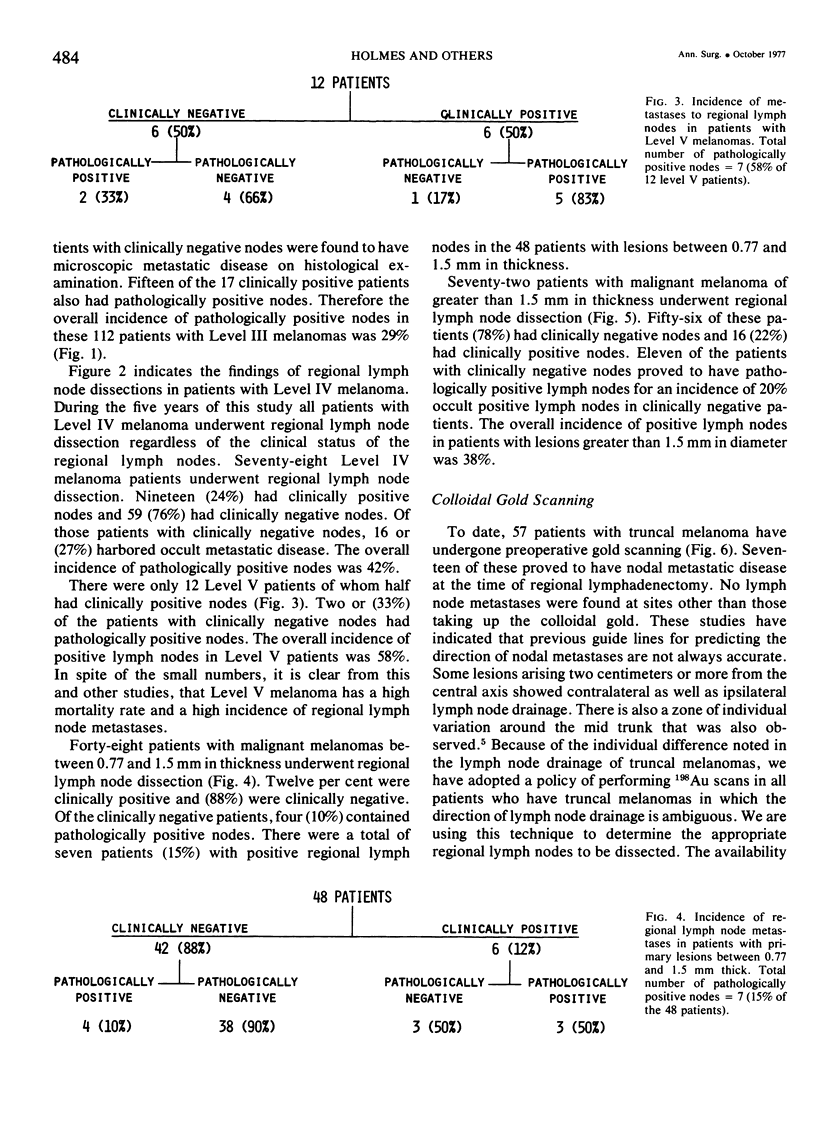
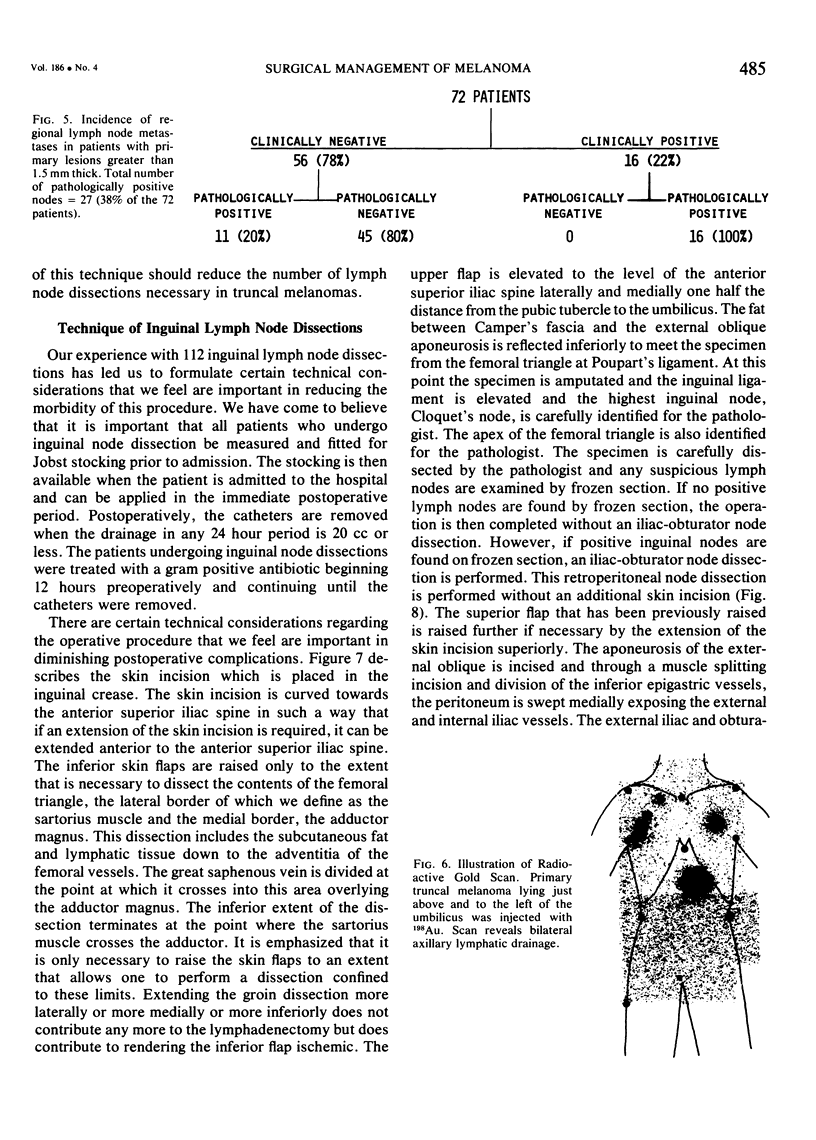
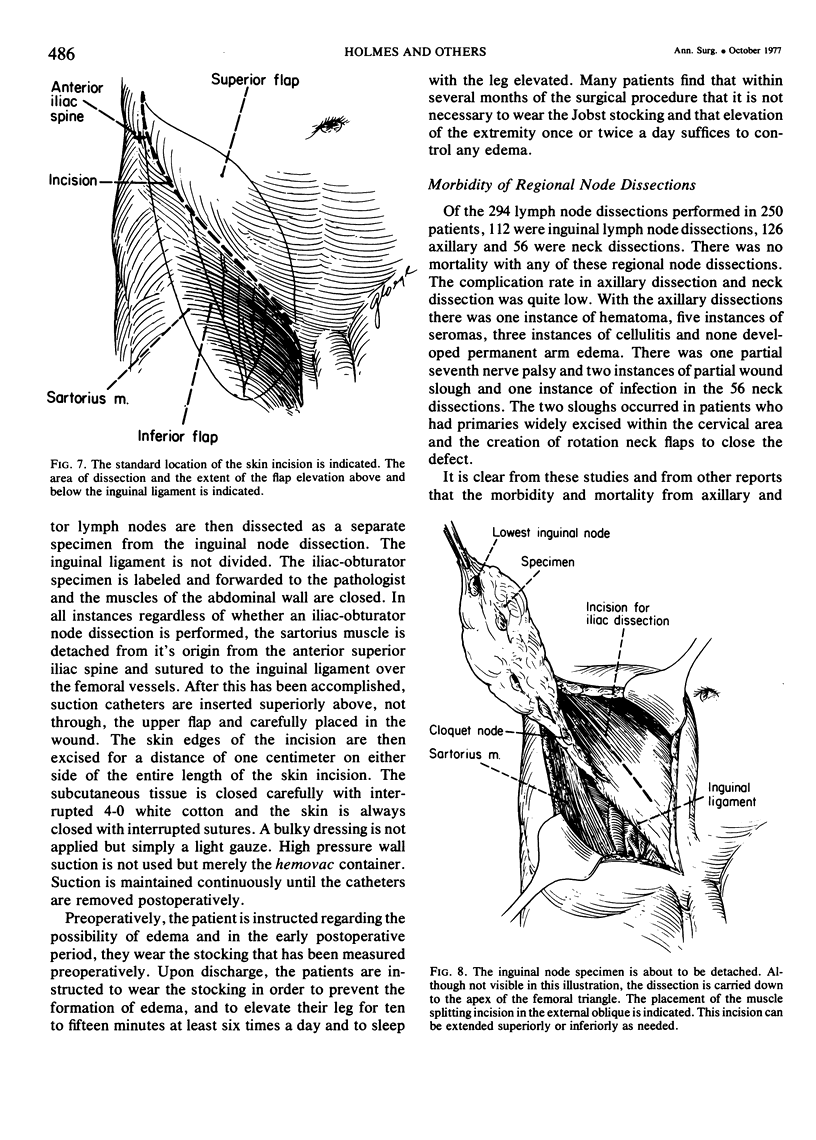
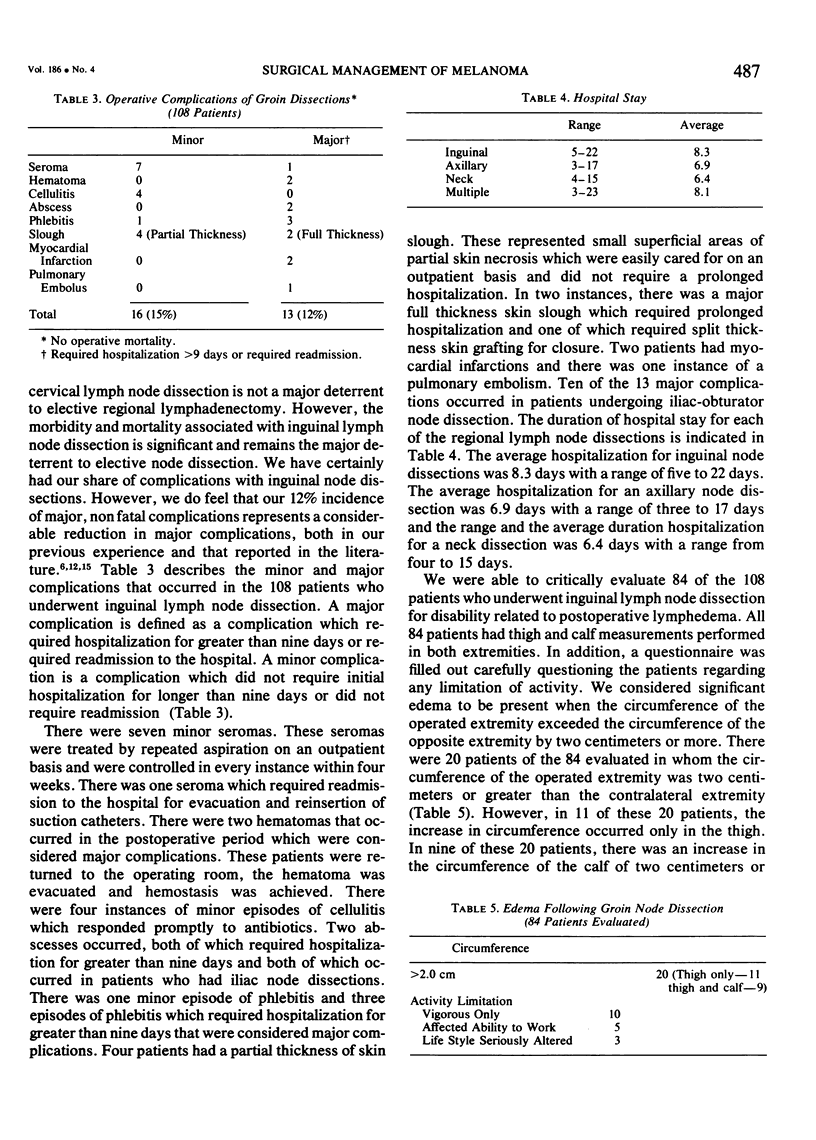
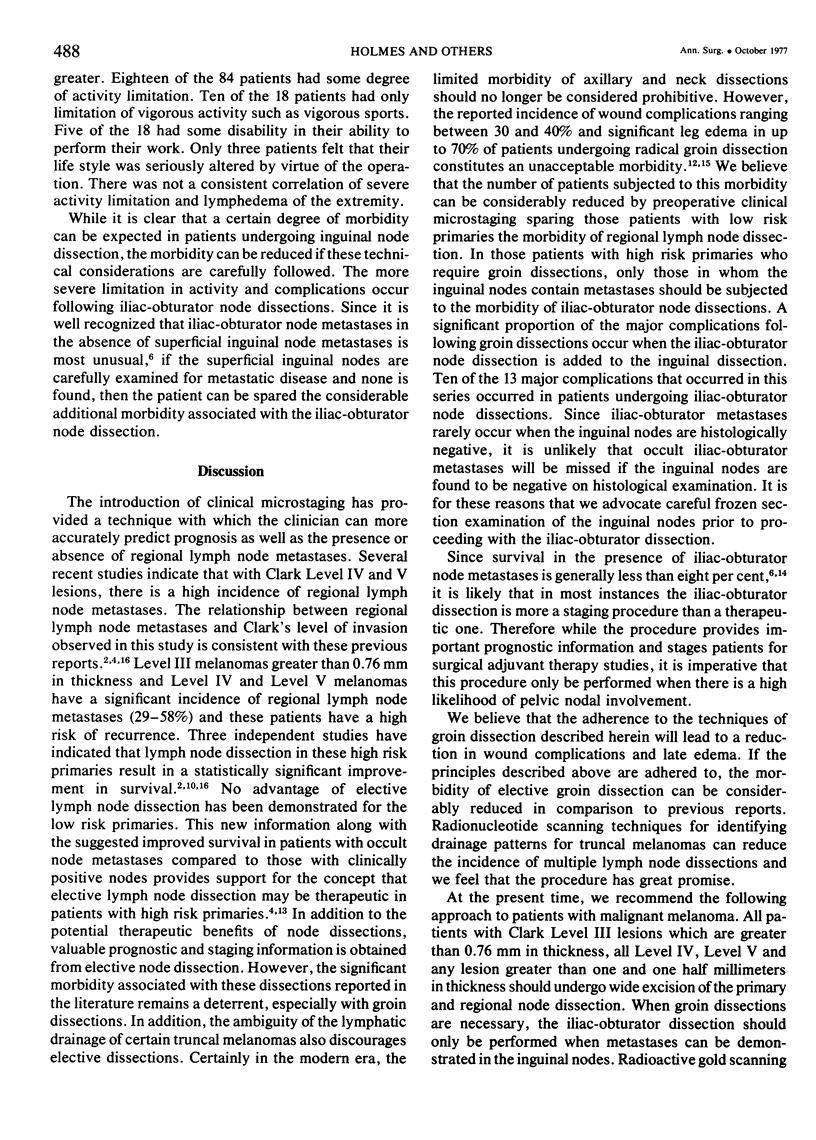
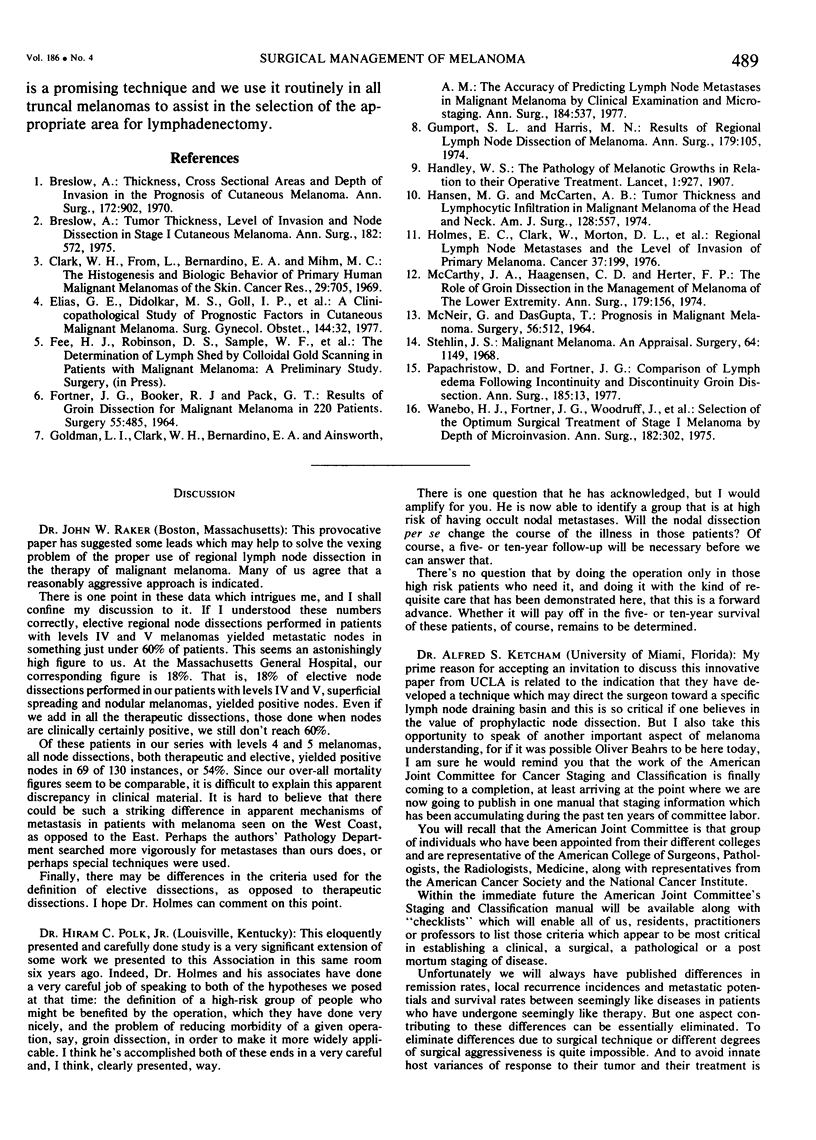
Selected References
These references are in PubMed. This may not be the complete list of references from this article.
- Breslow A. Thickness, cross-sectional areas and depth of invasion in the prognosis of cutaneous melanoma. Ann Surg. 1970 Nov;172(5):902–908. doi: 10.1097/00000658-197011000-00017. [DOI] [PMC free article] [PubMed] [Google Scholar]
- Breslow A. Tumor thickness, level of invasion and node dissection in stage I cutaneous melanoma. Ann Surg. 1975 Nov;182(5):572–575. doi: 10.1097/00000658-197511000-00007. [DOI] [PMC free article] [PubMed] [Google Scholar]
- Clark W. H., Jr, From L., Bernardino E. A., Mihm M. C. The histogenesis and biologic behavior of primary human malignant melanomas of the skin. Cancer Res. 1969 Mar;29(3):705–727. [PubMed] [Google Scholar]
- FORTNER J. G., BOOHER R. J., PACK G. T. RESULTS OF GROIN DISSECTION FOR MALIGNANT MELANOMA IN 220 PATIENTS. Surgery. 1964 Apr;55:485–494. [PubMed] [Google Scholar]
- Goldman L. I., Clark W. H., Jr, Bernardino E. A., Ainsworth A. M. The accuracy of predicting lymph nodes metastases in malignant melanoma by clinical examination and microstaging. Ann Surg. 1976 Nov;184(5):537–540. doi: 10.1097/00000658-197611000-00002. [DOI] [PMC free article] [PubMed] [Google Scholar]
- Gumport S. L., Harris M. N. Results of regional lymph node dissection for melanoma. Ann Surg. 1974 Jan;179(1):105–108. doi: 10.1097/00000658-197401000-00020. [DOI] [PMC free article] [PubMed] [Google Scholar]
- Hansen M. G., McCarten A. B. Tumor thickness and lymphocytic infiltration in malignant melanoma of the head and neck. Am J Surg. 1974 Oct;128(4):557–561. doi: 10.1016/0002-9610(74)90275-x. [DOI] [PubMed] [Google Scholar]
- Holmes E. C., Clark W., Morton D. L., Eilber F. R., Bochow A. J. Regional lymph node metastases and the level of invasion of primary melanoma. Cancer. 1976 Jan;37(1):199–201. doi: 10.1002/1097-0142(197601)37:1<199::aid-cncr2820370128>3.0.co;2-l. [DOI] [PubMed] [Google Scholar]
- Jochimsen P. R., Pearlman N. W., Lawton R. L. Course and treatment results of young patients with carcinoma of the pancreas. Surg Gynecol Obstet. 1977 Jan;144(1):32–34. [PubMed] [Google Scholar]
- MACNEER G., DASGUPTA T. PROGNOSIS IN MALIGNANT MELANOMA. Surgery. 1964 Sep;56:512–518. [PubMed] [Google Scholar]
- McCarthy J. G., Haagensen C. D., Herter F. P. The role of groin dissection in the management of melanoma of the lower extremity. Ann Surg. 1974 Feb;179(2):156–159. doi: 10.1097/00000658-197402000-00007. [DOI] [PMC free article] [PubMed] [Google Scholar]
- Papachristou D., Fortner J. G. Comparison of lymphedema following incontinuity and discontinuity groin dissection. Ann Surg. 1977 Jan;185(1):13–16. doi: 10.1097/00000658-197701000-00002. [DOI] [PMC free article] [PubMed] [Google Scholar]
- Stehlin J. S., Jr Malignant melanoma. An appraisal. Surgery. 1968 Dec;64(6):1149–1157. [PubMed] [Google Scholar]
- Wanebo H. J., Fortner J. G., Woodruff J., MacLean B., Binkowski E. Selection of the optimum surgical treatment of stage I melanoma by depth of microinvasion: Use of the combined microstage technique (Clark-Breslow). Ann Surg. 1975 Sep;182(3):302–315. doi: 10.1097/00000658-197509000-00013. [DOI] [PMC free article] [PubMed] [Google Scholar]


